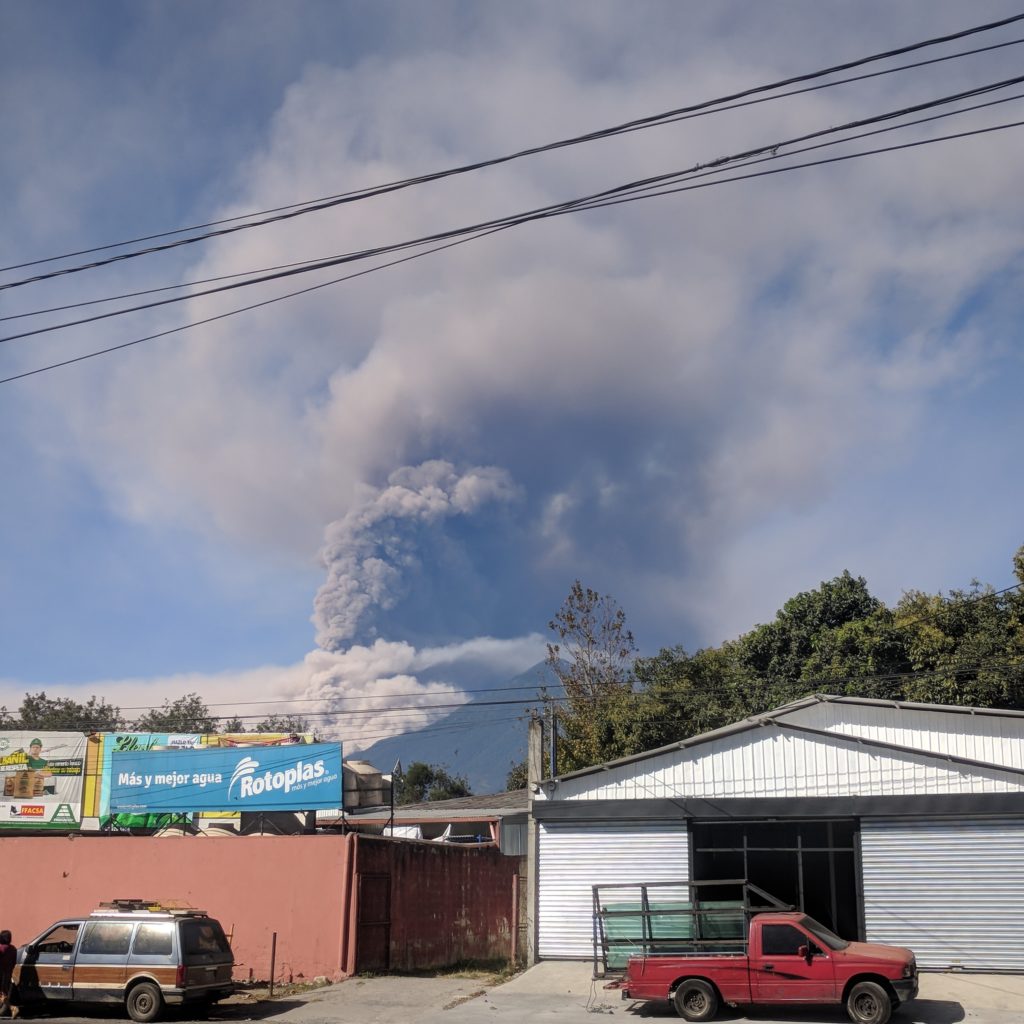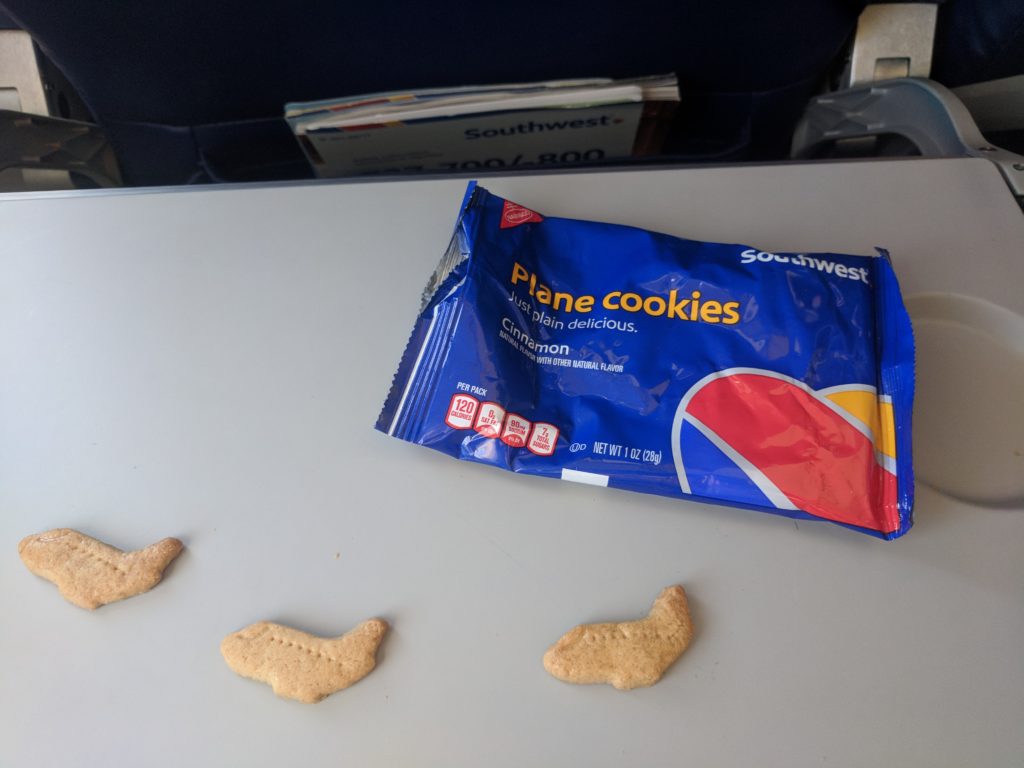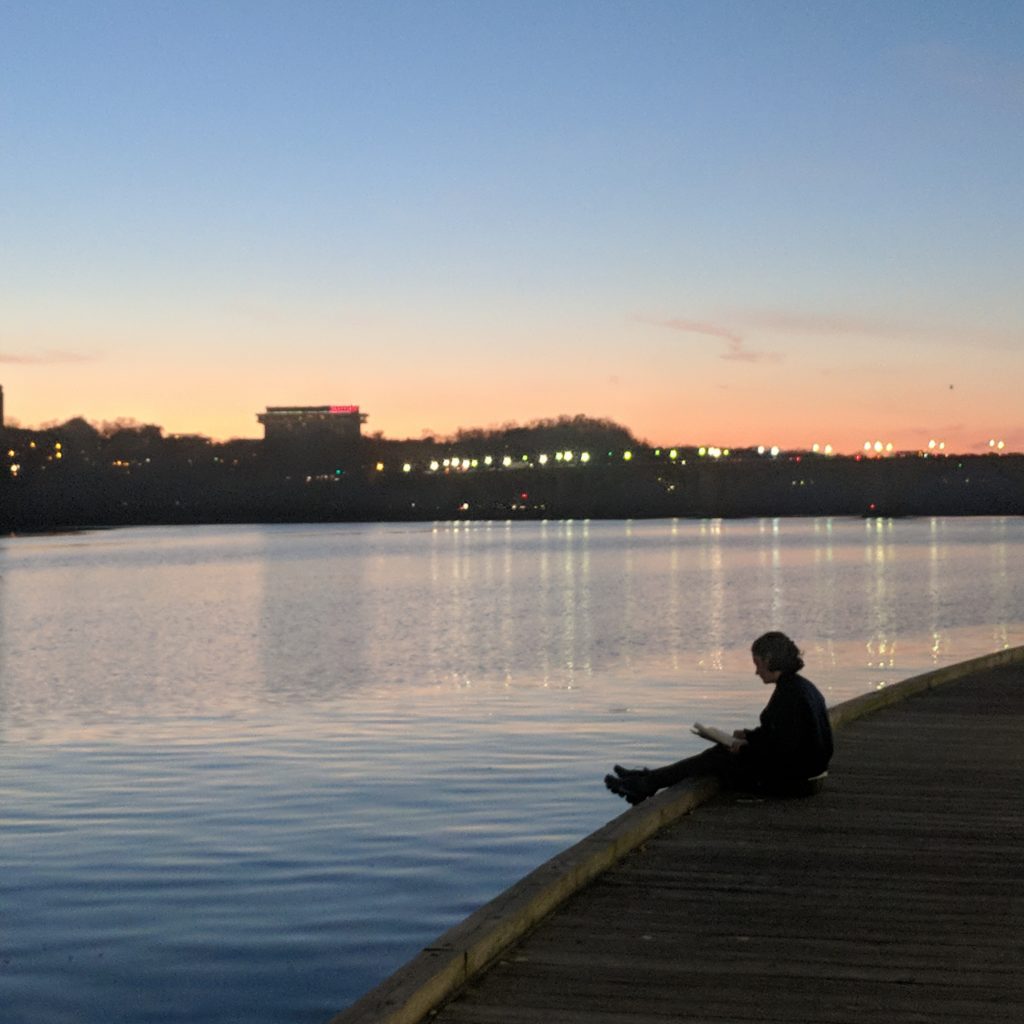October 21, 2020

hey!
I'm amanda
I help entrepreneurs save valuable brain space to grow their income + do what they love. I'm fueled by cookies + kitty cuddles.
Search...
Categories
Remote Work
Travel
Cookie Crumbs
About Me
Disclaimer: This article talks about potentially triggering topics like depression and anxiety. The experiences I speak about in this article are my own. Traveling with mental illness can be a different experience for everyone. In addition, I am not a doctor or licensed medical professional. If you or someone you know is struggling with mental illness and needs help, please contact a licensed medical professional.
I distinctly remember telling myself “That’s it. I’m never traveling overseas.”
It was the summer of 1996 and I had just watched news coverage of the crash of TWA flight 800 with my father. The news anchor had mentioned that a group of students from my home state of Pennsylvania had been on the plane.
This shocked me… the idea that a group of students, only a few years older than myself, could be gone in the blink of an eye. An overreaction, I know, but this was how my young brain worked.
I was a highly sensitive and imaginative child, something I have always considered to be a double-edged sword. While having an active imagination allowed me to see the world in amazing ways, it also meant that I sometimes I felt emotions a little more intensely than others.
Well, my oh my how my feelings have changed! Flash forward to 2020 and I’ve now traveled independently on overseas trips many times; including two stints working abroad.

Hello everyone, my name is Amanda and I travel with Depression and Generalized Anxiety Disorder (GAD). Despite these illnesses, or maybe because of them, I am a traveler and lover of the freedom that remote work brings. I believe that we are never too old to change, better ourselves, or switch careers. I am an animal lover, a part-time digital nomad, and I enjoy a good Renaissance Faire now and then.
Travel isn’t always easy for me. There are always days when I want to hide in my room or fly home immediately after arrival. But, I refuse to give up on my unexpected wanderlust. Now, I’m here to share with you some tips on how you can travel with depression and anxiety. Here we go!
BEFORE LEAVING FOR YOUR TRIP
Finding the Courage to Leave (and doing an honest self-assessment)
As a runner, one of the quotes that is always in my head is that the biggest journey is from the couch to the front door. Deciding to travel can be the same way! The biggest hurdle that many of us face is buying the plane ticket or sitting around and waiting for the “right” time to go.
Consult a mental health professional or counselor
Before I left to work in South Korea, I had been in counseling for over a year after major bouts of anxiety and depression. When I told my counselor and psychiatrist that I was leaving to teach English in South Korea they were supportive. I had been making steady progress and wasn’t on a high dosage of medication. So, my psychiatrist gave me enough medication to last until I found a doctor in Korea. If you are in therapy, have an earnest talk with your counselor about your plans to make sure that you are prepared for the transition.
Talk to family and friends that you trust
Be your own advocate. Do research about the places you plan to visit and think of all the questions your parents or loved ones may ask. Present this information to them. They may not think that your decision to travel is the best idea, but there is a good chance that when they see how prepared you are, your family will hopefully come around and embrace your decision to travel.
Remember that the decision to travel is ultimately yours. If your family members don’t understand your choice that is okay.

Prepare for Emergencies!
Stay safe, and alleviate some parental worries, by preparing in advance for emergencies. I type important information into one detailed document. Before I left for a 3 ½ month backpacking trip through Mexico and Central America, I left my parents with the addresses, phone numbers, and embassy information for each country I traveled to.
When I arrived in a new location, I sent them a pin in WhatsApp to update them on where I was. Not only did this help calm me down, but it also made my trip fun for my parents! My dad loved tracking where I was on a map.
To help ease your own anxieties, and those of your family, here are a few “stay safe” suggestions:
- Make paper copies of important documents like your passport, vaccination papers, and other IDs.
- Type up a list of important information like contact info for your accommodation, local embassies or consulates, and any contacts you have in those countries.
- Purchase travel insurance in case of emergencies
- Learn a few phrases in the local language besides “Thank you” and “Hello.” My personal favorites are “Where is the bus to ____?” and “Where is the bathroom?” Muy importante!
*BONUS TIP: add the international call numbers for your credit and debit cards to your document or at least download the apps to your phone. Trust me, this comes in handy! I left a debit card in an ATM in Mexico and needed to call the U.S. to get a new one. During my last day in Italy this year, I lost my wallet and needed to use the apps to cancel my credit cards.
Prepare for Low Moments BEFORE You Leave Home
Anxiety often comes from a fear of the unknown or things that we feel are outside our control. Mitigate this by planning some of your itinerary in advance. To help ease my worries, I like to start by making a list of all the sights I may be interested in and then I narrow it down to the places and activities that fit my budget and timeline. If you enjoy seeing obscure and unique attractions, I recommend checking out the website of Atlas Obscura! Just be careful not to overschedule your days… unless having a full day of events is something you enjoy. For me, going from A to B to C is often more stressful than a day with nothing planned at all.

DURING YOUR TRIP
Set Small Goals
There are some days when small tasks like getting dressed, taking a shower, or leaving the house feel like they take herculean effort. My mind often tells me, “Why bother? It’s not worth it.” I know this is false and flawed thinking.
The years I have spent in counseling have taught me a few strategies to overcome these thoughts. However, that does not mean it is an easy thing to do. If you’re having a difficult day, try to do at least one thing like walking down the street to a café or going to a museum for an hour or two. Sometimes, a simple change of scenery will lift your mood and motivate you to do even more.
Expect Ups and Downs While Traveling
Bad things will happen before, during, and after your trip. I’ve tossed a phone into a pond in El Salvador, hyperventilated while descending a volcano in Guatemala at dawn, and lost my wallet in Rome. When these things happen do you best to see the positive side of things. After I lost my wallet, I was grateful that I had left my passport and a few credit cards at my B&B in case something like this happened. In almost all situations, there is a silver lining to be found.
Leave Your Comfort Zone
I took a double leap of faith when I traveled from Antigua, Guatemala to the tiny town of Tacuba, El Salvador. Not only was I venturing off the “gringo trail” but I also had not booked accommodation before I left. This was a first for a Type-A planner like me! After one shuttle and three chicken buses, I arrived in Tacuba and had an amazing time with other travelers that I met. I was so proud of myself for leaving my comfort zone behind and having an adventure! As a result, I met some of the kindest, most sincere, and genuinely helpful people. El Salvador remains one of my favorite countries to this day.
Travel at Your Own Pace
I have met individuals who have told me, “I never want to visit the same country or place twice.” That is their preferred travel style. For me, I don’t have the need or desire to see every country in the world. If that happens…great! If not, cool beans. I prefer to travel slowly, to get to know a country well and discovering what daily life is like there. I’m perfectly happy returning to the same place again and again; there’s always something new to explore! If you are new to traveling, trust that you will find your own pace. Fast or slow, there is no wrong answer, only what feels right for you.

RETURNING HOME
Thanks for the Memories!
Taking the time to process your time abroad, no matter how long or short, is as important as the time you take to plan your trip before you leave. One way to remember the highs and lows is to keep a travel journal.
For me, this journal is a useful tool for practical and fun details from my trip. I doodle, take notes, keep my daily budget, and write down the places that I’ve visited. Keeping a travel journal like this is a great way for you to recall memories you may have otherwise forgotten! It’s also a wonderful tool to help you realize how much you’ve accomplished! When I feel my mood getting low, I open my travel journal and then I remember how fun my trip truly was.
*Another creative idea! – a traveler that I met in Guatemala kept a personal “guest book” with her! Whenever she met a new person, she would give them the small notebook and some colored pencils and say “Write, draw, do whatever you want!” The notebook was an adorable collection of drawings, heartfelt notes, and contact details from fellow travelers that she met and a great way to recall the moments she had shared with them.

Be Honest
Be honest about how you are feeling about returning home with your friends and family. Yes, travel will help you grow and become stronger, but it’s not all sunsets and Insta photos opps. If you return home and are feeling particularly anxious or depressed, don’t be afraid to talk about how you feel with people you trust. Talk to friends, a counselor, or family. Even if they haven’t traveled, just having someone listen to you talk can help you feel better.
Coming Home From Your Trip (or staying abroad!) is Just the Beginning
Returning to your home country does not have to be a downer. Re-entry can be a new and exciting phase in your life or a welcomed return to things old and familiar. After my backpacking trip through Central America, I was so excited to be in one place for a while and not have to always think several days ahead to where I was going to be or what I would do.
To help you reframe your re-entry, here are a few ideas on how to look on the bright side:
- Become a local tourist! Visit your favorite sites that you haven’t seen in a while (This is especially important in 2020 during the COVID-19 pandemic.
- Plan a day trip with a friend
- Pet therapy! – think about how excited you’ll be to see your pet again! If you don’t have a pet, visit a friends’ pet (and give it back, of course)
- Plan some time into your schedule to reflect on your experiences abroad

Conclusion
In the end, our travel journeys are our own. After years of not talking about my personal experiences with mental illness, I want to share a small portion of my journey with you because I want everyone to know that It IS possible to travel with anxiety and depression.
You are not defined by your mental illness.
Just take your time, know your limits, and be realistic about the expectations you set for yourself. FOMO is a dangerous thing. Take pleasure in the small victories like going for a walk or making a connection with a local. This is your travel experience and you have the right to spend it however you want.
Take the time to challenge yourself as well as take stock of what you have accomplished. It is more than you may have realized!
Amanda is a virtual assistant and online ESL teacher. She has lived and worked overseas in Australia and South Korea. When she’s not helping entrepreneurs build their YouTube channels, she is running, on the hunt for a cookie, or cuddling with her Korean kitty, Jangmi.